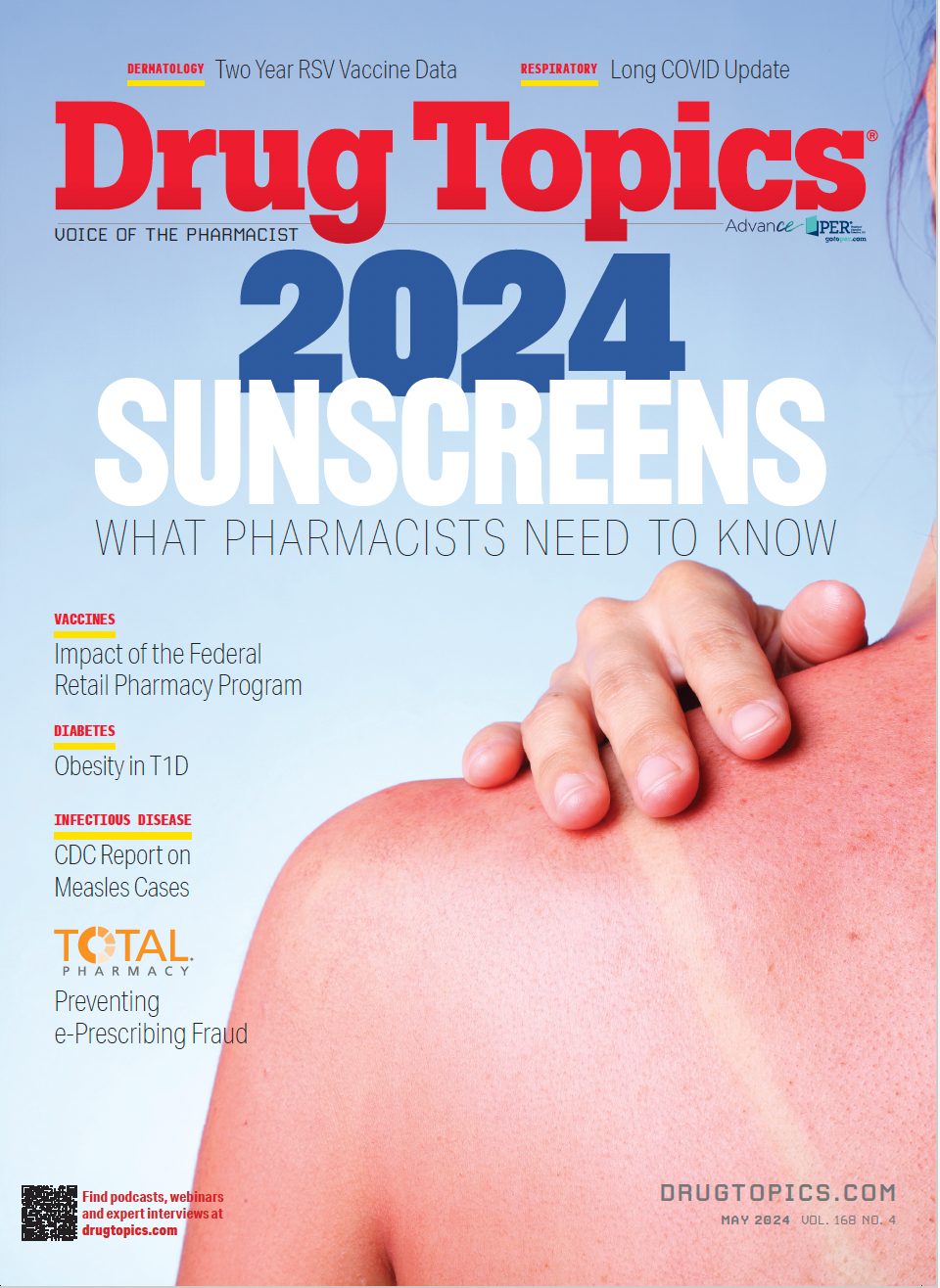FDA Approves Novel Topical Therapy for Molluscum Contagiosum
Berdazimer topical gel is the first in its class and is the only topical prescription medication to treat molluscum contagiosium that can be applied by patients or caregivers outside of a medical setting.
In January 2024, the FDA approved the novel therapy berdazimer 10.3% topical gel (Zelsuvmi) for the topical treatment of molluscum contagiosum (MC) in adults and pediatric patients aged 1 year and older.1 MC is a viral infection of the skin; it is highly contagious and is transmitted via skin-to-skin contact. Berdazimer topical gel is a nitric oxide–releasing agent. It is the first in its class and is the only topical prescription medication to treat MC that can be applied by patients or caregivers outside of a medical setting.
Close-up of molluscum contagiosum / Hanna - stock.adobe.com

Efficacy
Efficacy of berdazimer topical gel was evaluated in 3 multicenter, randomized, double-blind, parallel group, vehicle-controlled phase 3 trials: trial 1 (NCT04535531); trial 2 (NCT03927703); and trial 3 (NCT03927716). A total of 1598 participants were enrolled in the trials. Eligible participants were at least 6 months of age and had between 3 and 70 MC lesions at screening. Women of childbearing age were required to present a negative pregnancy test at screening and agreed to use an acceptable birth control method for the 12-week duration of the study and for 30 days after the conclusion of the study. Participants who had been receiving a prior treatment for MC began a washout period before being randomly assigned to either study group.
The majority of study participants were pediatric patients (96% aged 2-17 years; 3% aged younger than 2 years). Either study participants or their caregiver applied the treatment or the vehicle base daily to all MC lesions for either the full 12-week study period or for a minimum of 4 weeks, if all lesions were cleared (as determined by a study investigator at a scheduled visit).
The primary end point was the proportion of participants experiencing complete clearance of all treatable MC lesions at week 12. In trial 1, patients in the treatment group demonstrated complete clearance rates of 32.4%, compared with 19.7% in the placebo group (95% CI, 7.1%-18.6%). In trials 2 and 3, complete clearance rates at week 12 were 30.0% vs 20.3% (95% CI, –0.04% to 18.4%) and 26% vs 22% (95% CI, –5% to 14%).
Safety
The most noted adverse events were application site reactions. Other adverse reactions, reported by at least 1% of participants— with greater frequency in the treatment group—included pain (such as a burning or stinging sensation), erythema, pruritus, exfoliation, dermatitis, swelling, erosion, discoloration, vesicles, irritation, and infection.
Allergic contact dermatitis may present as pain, pruritus, swelling, and/or erythema at the site of application. If these symptoms last longer than 24 hours, contact dermatitis should be suspected, and berdazimer treatment should be discontinued. The safety of topical berdazimer therapy has not been established as safe for patients younger than 1 year of age, and no data are available on the use of topical berdazimer in patients who are pregnant or breastfeeding.
Dosing and Administration
Berdazimer 10.3% topical gel is a topical product provided in 2 tubes. A dose requires preparation prior to application: Tube A contains berdazimer gel, and tube B contains the hydrogel vehicle. A dosing guide is provided to help the patient measure amounts of product from each tube to be mixed. Once mixed, the prepared dose should be applied immediately in a thin, even layer to each MC lesion and allowed to dry for 10 minutes. Patients should avoid swimming, bathing, or washing the area of application for at least 1 hour after applying the dose. Doses should not be premixed or stored mixed for later use. The treatment is for topical use only; it is not for oral, ophthalmic, or intravaginal application.
READ MORE: Dermatology Resource Center
Pharmacy practice is always changing. Stay ahead of the curve: Sign up for our free Drug Topics newsletter and get the latest drug information, industry trends, and patient care tips, straight to your inbox.
Reference
1. Zelsuvmi.Prescribing information. EPIH SPV, LLC;2024. Accessed April 15, 2024. https://zelsuvmi.com/wp-content/uploads/2024/01/ZELSUVMI-Berdazimer-Topical-Gel-10.3.-Prescribing-Information-and-Instructions-for-Use.pdf
